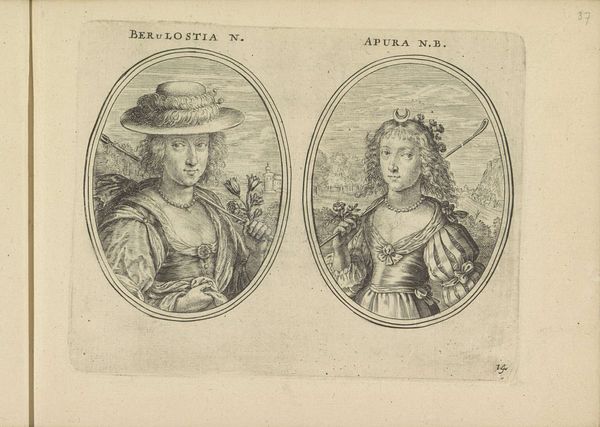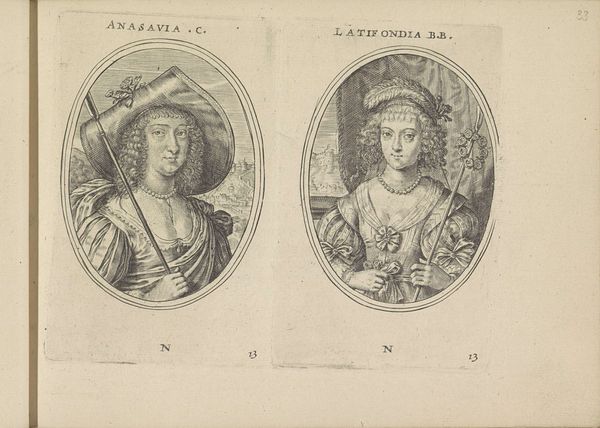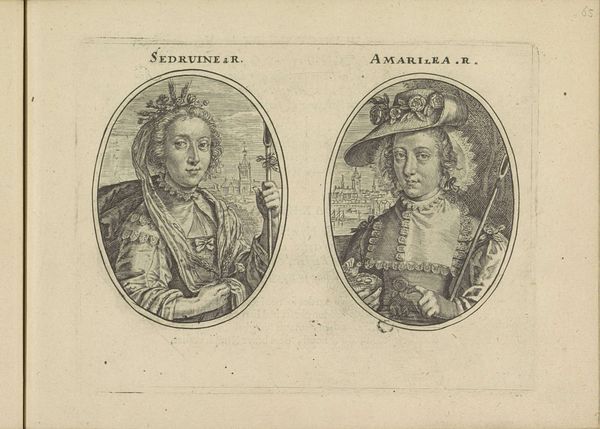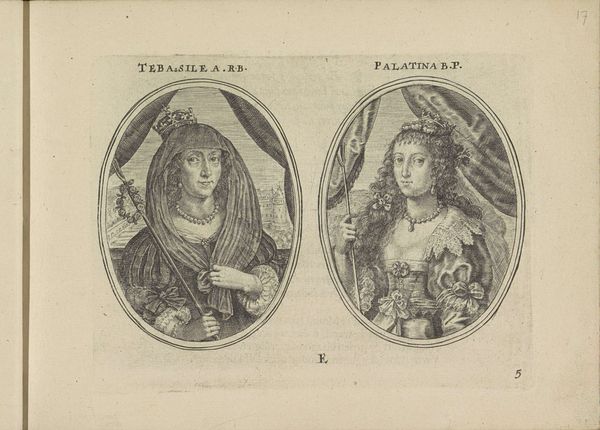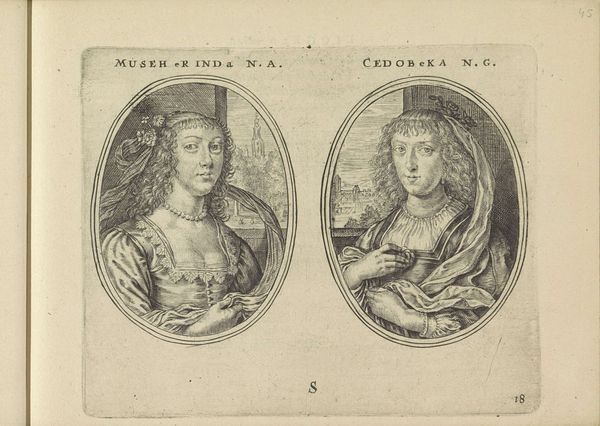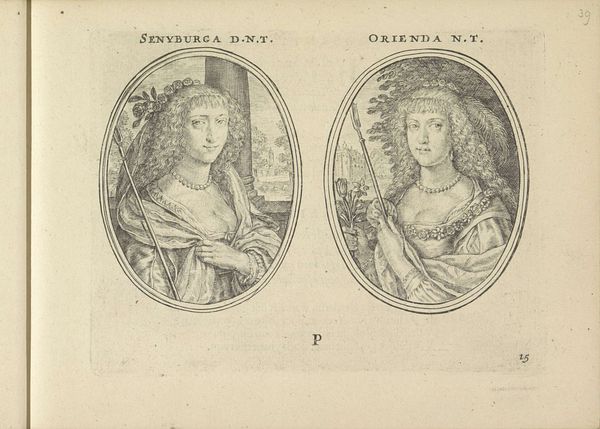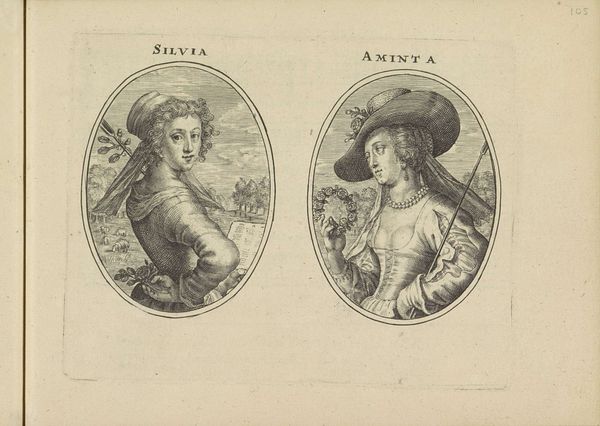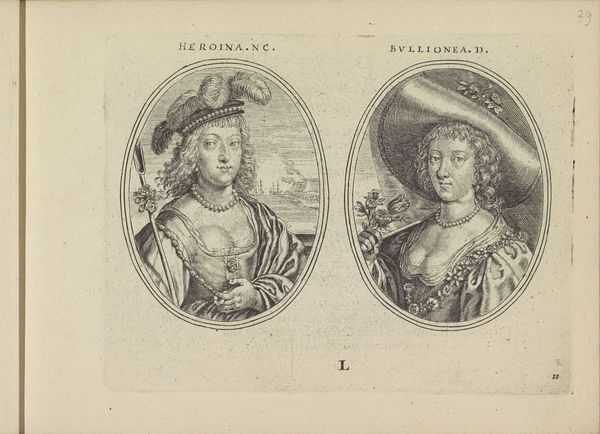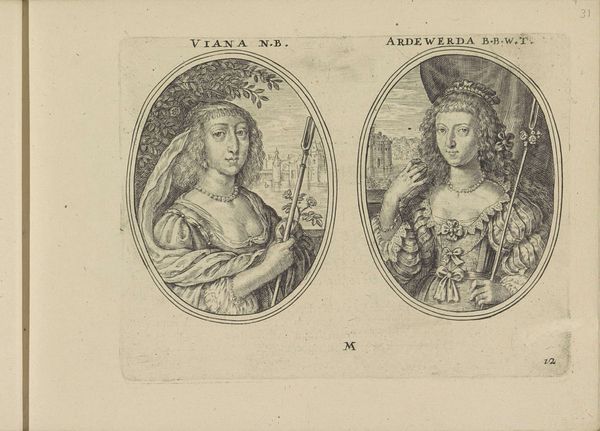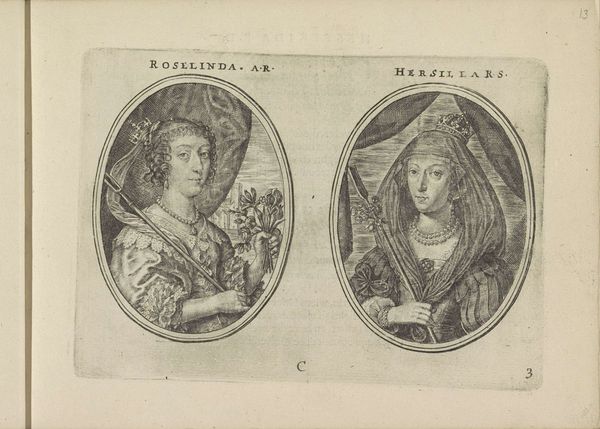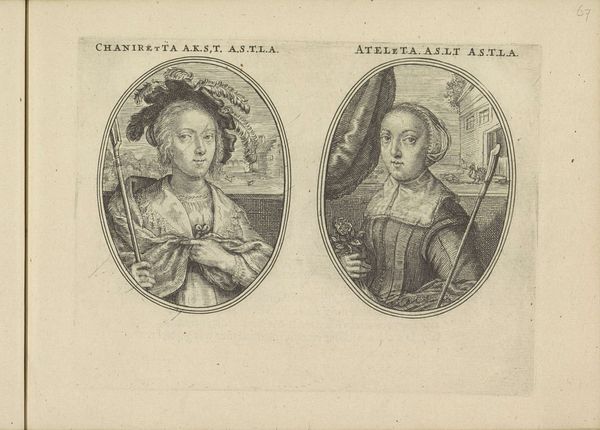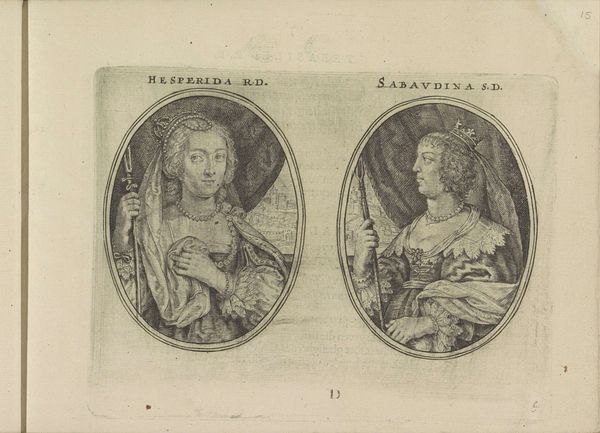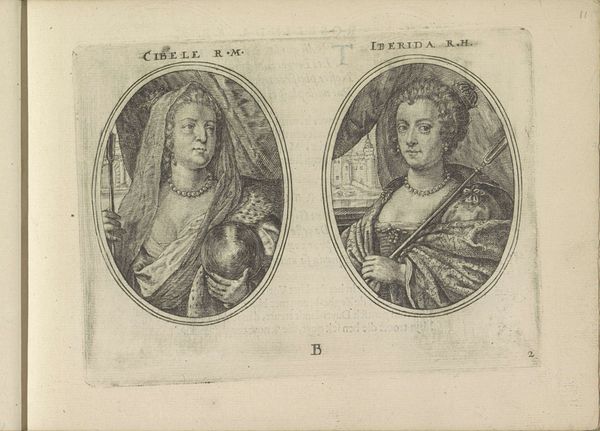
Portretten van twee onbekende vrouwen, beiden als herderin 1640
0:00
0:00
crispijnvandeiipasse
Rijksmuseum
#
toned paper
#
light pencil work
#
pen sketch
#
pencil sketch
#
old engraving style
#
personal sketchbook
#
pen-ink sketch
#
pen work
#
sketchbook drawing
#
sketchbook art
Dimensions: height 117 mm, width 152 mm
Copyright: Rijks Museum: Open Domain
Crispijn van de Passe the Younger created these portraits of two unknown women, both depicted as shepherdesses, as an engraving. Made in the Netherlands, this double portrait presents an intriguing view into the social and cultural norms of the 17th century. The women, identified as "Alutea" and "Rosea", are idealized figures, embodying pastoral simplicity and elegance, set against backdrops of cityscapes. Their roles as shepherdesses reflect a broader fascination with the idyllic countryside, a theme often explored in art and literature of the time. The portrayal of women in such roles can be seen as both a commentary on and a reinforcement of social expectations. How do these images reflect the status and roles of women in Dutch society at the time? Were they intended as mere aesthetic objects, or did they carry deeper social or political meanings? To fully understand the portraits, one might delve into emblem books and contemporary literature that explore the symbolic meanings of the pastoral figures. By examining these historical sources, we can gain a richer understanding of the artwork within its specific social and institutional context.
Comments
No comments
Be the first to comment and join the conversation on the ultimate creative platform.
